Life may not begin at 60, but if these folks are any indication, it doesn’t get any less interesting…
60
Rod Hirsch • Dunellen
Community Leader
A hero supporting our overseas heroes, Hirsch founded “Operation Shoebox” in 2005. It’s a volunteer-based organization dedicated to shipping care packages filled with all sorts of necessities to our military men and women far away from home.
Cathi Rendfrey • Delran
Community Leader
Rendfrey is vigorously involved in women’s rights, directing the Women’s Opportunity Center at the YMCA of Burlington County, which helps displaced homemakers gain economic knowledge through education, networking, outreach and job preparations.
61
Eric Maskin • Princeton
Economist
Maskin won a Nobel Prize in 2007 for his contributions to mechanism design theory, a branch of economics that describes how institutions function in the midst of inefficient markets. Maskin lives with his family in Albert Einstein’s former residence.
Cynthia Meryl • Westfield
Theatre Director
Meryl founded the New Jersey Youth Theatre in Westfield, serving as its Artistic Director and Master Teacher for more than two decades. NJYT offers high-quality theatre arts education at little or no cost to young people with the talent and ambition to make it to Broadway.
Jane Hanson • Montclair
Community Leader
As co-founder of Partners for Women and Justice, Hanson has helped thousands of women and children involved in domestic violence and abuse. The organization offers free legal services from many volunteer lawyers as well as a fulltime staff.
JoJo Starbuck • Madison
Olympian/Coach
A four-time U.S. figure skating champion, Starbuck devotes herself to tutoring the newest generation of ice princesses at the Essex Skating Club.
Max Weinberg • Atlantic Highlands
Musician
The E Street Band veteran became a breakout star after teaming with Conan O’Brien. His new group, The Max Weinberg Big Band, plays the hits of the 30s, 40s & 50s.
62
Gloria Gaynor • Green Brook
Musician
Gaynor was the original disco diva, and she holds on to that title by continuing to deliver knockout concerts all over the world. I Will Survive has become an anthem for personal strength and self-discovery.
Bruce Springsteen • Rumson
Musician
Springsteen ranks among the most influential songwriters and performers in the history of rock. More important, you never know when he’ll pop on stage at a Jersey Shore club for a surprise set.
Zygi Wilf • Springfield
NFL Owner
A Fairleigh Dickinson grad, Wilf built malls and apartment complexes throughout New Jersey. He headed a group that purchased the Minnesota Vikings in 2005.
Stevie Wonder • Alpine
Musician
The master performer continues to churn out new music and electrify audiences after five decades in front of the microphone.
63
Bruce Springsteen • Rumson
Musician
Springsteen ranks among the most influential songwriters and performers in the history of rock. More important, you never know when he’ll pop on stage at a Jersey Shore club for a surprise set.
Zygi Wilf • Springfield
NFL Owner
A Fairleigh Dickinson grad, Wilf built malls and apartment complexes throughout New Jersey. He headed a group that purchased the Minnesota Vikings in 2005.
Stevie Wonder • Alpine
Musician
The master performer continues to churn out new music and electrify audiences after five decades in front of the microphone.
Nelson Johnson • Hammonton
Judge/Author
While conducting legal research in Atlantic County, he pieced together the seamy history of AC and wrote a book. Maybe you’ve heard of it? Boardwalk Empire.
Southside Johnny Lyon • Ocean Grove
Musician
The originator of Jersey Shore Rock, Lyon inspired countless young musicians, including Jon Bon Jovi. His band recently returned from a European Tour to play an east Coast swing that included—where else?—The Stone Pony in Asbury Park.
64
Steve Forbes • Bedminster
Publisher
Taking after his father and grandfather, Forbes published his first magazine while an undergrad at Princeton. As CEO of the publication that bears his family name, he is one of the country’s most influential conservative forces.
65
Sol Barer • Mendham
Organic Chemist
Barer is leading the research into therapies that turn incurable blood cancers into manageable diseases. A Rutgers Ph.D., he ranks among New Jersey’s most acclaimed and honored scientific minds.
Connie Chung • Middletown
Newswoman
The second woman to ever co-anchor a major network’s national news broadcast, Chung has worked for ABC, NBC, CBS, CNN and MSNBC. Did hubby Maury make this list? Read on…
Bob Hurley • Jersey City
Basketball
Coach Hurley has led St. Anthony’s High in Jersey City to 26 state championships (and counting). He was just the third high school basketball coach to be inducted into the Basketball Hall of Fame.
Woody Johnson • Bedminster
Business
Leader/Philanthropist The great-grandson of J&J co-founder Robert Wood Johnson, Woody serves as Chairman and CEO of the company and also owns the NFL Jets. He is an avid supporter of charitable organizations, fundraising for lupus, diabetes and more.
66
Bettye LaVette • West Orange
Musician
LaVette has been pumping out jaw-dropping blues, jazz, rock and R&B performances for a half-century. Since moving to NJ a decade ago, the Great Lady of Soul has scored a couple of Grammy nominations and performed at the Kennedy Center.
Roy Pedersen • Lambertville
Art Historian
A noted gallery owner, Pederson has been working for a decade on a landmark book about the Impressionist painters of New Jersey. It’ll stir up a hornet’s nest in the art world when it’s published in 2013. Trust us on this one.
67
Danny DeVito • Interlaken
Actor
Whether playing Louie on Taxi or Frank on It’s Always Sunny in Philadelphia, DeVito has a way of making the most loathsome characters utterly charming.
Deborah Harry • Red Bank
Musician
As the front woman for Blondie, Harry was the New Wave diva of the 1970s. She graduated from Hawthorne High and Centenary College, so she’s NJ all the way.
68
Mel Karmazin • Mantoloking
Entertainment Executive
The co-founder of Infinity Broadcasting in the 1980s, Karmazin pushed sports talk into the cultural stratosphere with WFAN, and later brought Howard Stern to millions of listeners as CEO of Sirius XM Radio.
69
George Benson • Englewood
Musician
A jazz guitar prodigy in the 60s, Benson launched an epic solo career in the mid-70s with Breezin’. The album went triple-platinum, selling more than three million copies. In 2009, Benson was recognized as a Jazz Master—the National Endowment of the Arts’ highest honor.
Leon Cooperman • Short Hills
Business Leader/Philanthropist
The billionaire head of Omega Advisors devotes a huge percentage of his attention and wealth to charity and education. Cooperman has followed the lead of Warren Buffett and Bill Gates in signing The Giving Pledge.
Peter Kellogg • Short Hills
Business Leader/Philanthropist
Kellogg took over his father’s specialty brokerage at age 30 and transformed it into a Wall Street market-maker. Since selling the company for $6.5 billion in 2000, Kellogg has been a generous supporter of countless causes, from his old high school to the U.S. Ski Team.
Joe Pesci • Lavallette
Actor
The quintessential pugnacious Garden Stater, Pesci was a successful child actor on Broadway and TV in the 1950s. He was running a restaurant in the Bronx in the late-70s when he got a call from Robert De Niro to audition for a co-starring role in Raging Bull. The rest, as they say, is history.
70
Muhammad Ali • Cherry Hill
Athlete
Ali was the first sports star to use his fame to draw attention to social injustice—and paid a heavy price. All these years later, the three-time heavyweight champ is still revered as both an athlete and activist.
Bonnie McCay • Bridgewater
Ecologist
The Rutgers professor is known for her extensive research focusing on sustainable marine fishery conditions and ecosystems around the world, while stressing the significance of the adaptation of institutions, such as science, law and property.
71
Daniel Murnick • Bernardsville
Physicist Another Rutgers professor, Murnick pioneered the development of the Laser Assisted Ratio Analyzer—a breath test that detects stomach/intestinal ulcers, which replaces invasive surgery.
72
Roger Ailes • Cresskill
Newsman
Say what you will about his politics or his TV network, but long before joining FOX, Ailes was already a legend as a conservative media consultant. He worked for the likes of Nixon, Reagan and Bush I, and engineered Rudy Giuliani’s first mayoral campaign in 1989.
73
Carolyn Clark • Long Valley
Ballet Director
The American Ballet Theatre performer used her knowledge and love of the dance world to fashion a highly acclaimed company and school in Livingston. It’s been flourishing under her direction since the 1960s.
Ben E. King • Teaneck Musician
King’s recording of Stand By Me had the unique distinction of being a Top 10 single 25 years apart, in 1961 and again in 1986. His nonprofit, The Stand by Me Foundation, reaches out to young people in Bergen County.
Maury Povich • Middletown
TV Personality
The father of tabloid infotainment is married to Connie Chung. They met in the early 80s when both were working in a Washington D.C. newsroom. His self-titled talk show has been pulling huge ratings for more than two decades.
74
Pete Dawkins • Rumson
Athlete/Military Leader
Dawkins turned down a scholarship to Yale to attend West Point in the 1950s. Good decision. He won the Heisman Trophy for Army in 1958 and retired with the rank of Brigadier General 25 years later. In between, he attended Oxford on a Rhodes Scholarship and while there taught the Brits an overhand rugby throw dubbed the Yankee Torpedo.
Joyce Carol Oates • Princeton
Author
Oates began writing at age 14 and has been on a straight path of success and determination ever since. Them, one of her first remarkable novels, has been followed by over 50 published works. She has been a creative writing professor at Princeton since 1978.
75
C.K. Williams • Princeton
Poet
The Newark-born poet won the Pulitzer Prize in 2000 for Repair, his volume regarding forgiveness. Like Oates, Williams teaches creative writing at Princeton.
76
Alan Alda • Leonia
Actor
During his years as the star of M*A*S*H*, Alda commuted from New Jersey to Hollywood so as not to uproot his family. Six Emmys later, his star continues to burn brightly, with unforgettable turns on series such as The West Wing, 30 Rock and The Big C. Alda also starred in the Broadway revival of Glengarry Glen Ross and the 2011 film Tower Heist.
Bob Lucky • Fair Haven
Electrical
Engineer Lucky won the coveted Marconi Prize for developing the adaptive equalizer that quadrupled data transmission rates for modems and telephone lines. An expert on the relationship between technology and society, Lucky chairs the group appointed by Gov. Christie to oversee the redevelopment of Ft. Monmouth.
Robert Wilson • Holmdel
Astronomer
Along with Bell Labs co-worker Arno Allan Penzias, Wilson discovered the cosmic microwave background radiation that proved the Big Bang theory, in 1964. They received a Nobel Prize in physics 14 years later.
77
Thomas Kean • Bedminster Township
Politician
Our 48th Governor (1982 to 1990)—as well as the Chairman of the “9-11 Commission”—Kean served as President of Drew University for 15 years. Kean University also bears his family name.
The Amazing Kreskin • North Caldwell
Mentalist
Born George Kresge in Montclair, Kreskin was inspired by comic book hero Mandrake the Magician. Not a psychic or an illusionist, Kreskin nonetheless has an uncanny talent for predicting the future. (He knew you’d be reading this article.)
78
Michael Graves • Princeton
Architect
Renowned for his interior design and commercial and residential buildings, Graves also produced sleek, functional domestic items for Target. He taught for nearly four decades at Princeton and is the director of the firm Michael Graves & Associates.
79
Danny Aiello • Saddle River
Actor
Few actors can play ugly and violent, and also gentle and sensitive, as well as Aiello. Stop and think of the big-time films he’s been in—Moonstruck, Bang the Drum Slowly, Do the Right Thing, Broadway Danny Rose, Pret-a-Porter, The Godfather. Simply amazing.
80
Wally Broecker • Closter
Geochemist
The man who coined the term Global Warming in the 1970s has authored more than 450 papers and 10 books, including The Great Ocean Conveyor in 2010. It was Broecker who convinced Land’s End billionaire Gary Comer to devote much of his fortune to raising awareness about climate change.
Jim Bunning • Cherry Hill
Athlete/Politician
The author of a perfect game against the Mets in 1964, Bunning followed a Hall of Fame baseball career with more than two decades of service in the U.S. Senate (R Kentucky). Bunning returned to South Jersey after leaving Washington in 2011.
Herwig Kogelnik • Rumson
Electrical Engineer
Among Kogelnik’s influential contributions during 40 years at Bell Labs were distributed feedback lasers, holographic data storage and multichannel optical networks. That last one is what makes the Internet work—take that Al Gore!
James P. “Doc” McGlone • Boonton
Educator
The beloved theater director staged more than 250 productions during his tenure at Seton Hall. He established an enduring Theater-in-the-Round tradition on the South Orange campus before retiring in 2011.
Bob McGrath • Teaneck
Entertainer
Known to generations of kids as Bob on Sesame Street, McGrath stands as one of the most beloved and trusted people in the history of children’s television.
81
Dick Kazmaier • Rumson
Athlete/Business Leader
Kazmaier appeared on the cover of Time in 1951 during a season that saw him win the Heisman Trophy for the Princeton football team. He turned down a chance to play in the NFL, choosing instead to attend Harvard Business School. Kazmaier went on to become one of the most respected figures in the sports marketing and finance industry.
John McPhee • Princeton
Writer
McPhee’s first book, A Sense of Where You Are, profiled fellow Princetonian Bill Bradley. Since then his work has garnered countless accolades and awards, including a 1999 Pulitzer for Annals of the Former World. McPhee’s roommate in school was Dick Kazmaier.
84
Mary Higgins Clark • Saddle River
Author
The Queen of Suspense has pumped out 42 best-sellers. She has been the President of the Mystery Writers of America and served as Chairman of the International Crime Congress.
John Nash • Princeton Junction
Mathematician
The subject of the film A Beautiful Mind, Nash broke new ground on game theory while struggling with paranoid schizophrenia. His mathematical theories have a wide range of applications, from economics to artificial intelligence, and provide an intriguing prism through which to view chance and events.
85
Bill Jersey • Lambertville
Filmmaker/Artist See
Judith Trojan’s profile of Bill on the facing page.
Clark Paradise • Toms River
Community Leader
Clark and his wife, Jean (81), stand out among the thousands of selfless community volunteers around the state. The Paradises created Your Grandmother’s Cupboard to collect and distribute desperately needed personal-care items (plus food and clothing) to impoverished families in temporary housing.
86
Bucky Pizzarelli • Saddle River
Musician
Pizzarelli was a guitar virtuoso long before it went electric, earning a seat in Vaughn Monroe’s big band as a teenager in the 1940s. He was voted into the New Jersey Hall of Fame last year.
87
Yogi Berra • Montclair
Athlete
One of baseball’s great pressure players—and the author of countless off-kilter quotes—Yogi is a regular institution in his adopted hometown of Montclair.
88
Frank Lautenberg • Cliffside Park
Politician
The oldest member of the U.S. Senate, Lautenberg initially retired but returned to Washington after Bob Torricelli got into hot water. Before entering politics, Lautenberg ran ADP in Roseland.
111
Melva Radcliffe • Wall
Supercentenarian
Yes, you read that right. Radcliffe was born in Paterson in 1901 and is closing in on the state longevity record of 112. She has survived colon cancer and two broken hips. Both of her sisters also reached triple-digits.
Editor’s Note: Is there an extraordinary 60+ New Jerseyan you think should have made this list? Tell us why on our Facebook page – EDGE Magazine (NJ).













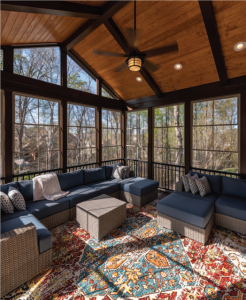





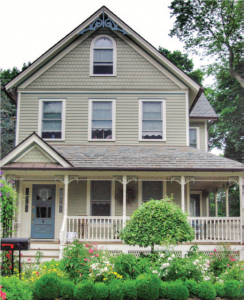











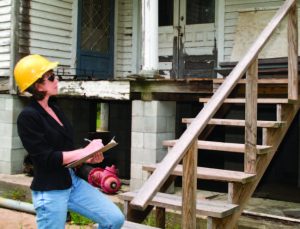

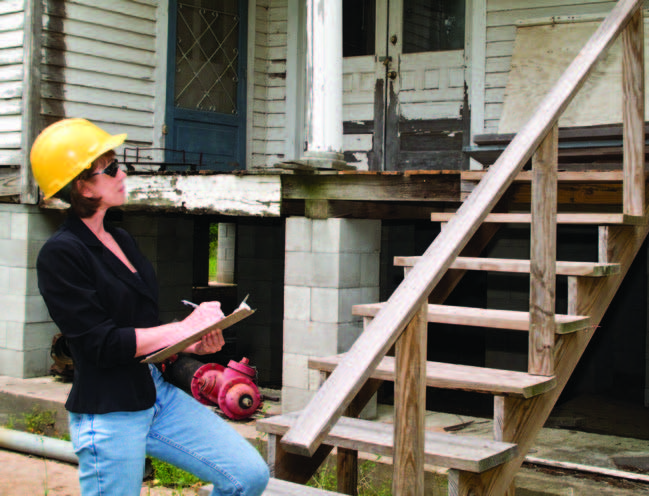







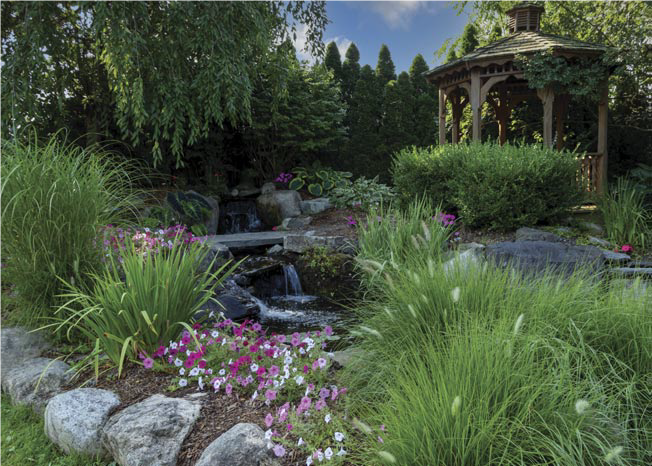






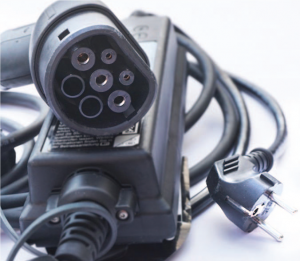


 Michelson is especially interested in what’s happening at Piech Automotive—founded by Porsche family heir Anton Piech—which is creating a unique car company that has broken with traditional manufacturing theory. Peter Thiel, the founder of PayPal, is an investor and several “A-list car guys” from Porsche/VW Group, BMW, and TESLA have joined the company. Piech is offering short-term leasing of EVs; it will be interesting to see if this leads people to buy more EVs as a result of driving them for a few months—as well as the impact on dealerships, since they are leasing directly to consumers and not going through dealerships.
Michelson is especially interested in what’s happening at Piech Automotive—founded by Porsche family heir Anton Piech—which is creating a unique car company that has broken with traditional manufacturing theory. Peter Thiel, the founder of PayPal, is an investor and several “A-list car guys” from Porsche/VW Group, BMW, and TESLA have joined the company. Piech is offering short-term leasing of EVs; it will be interesting to see if this leads people to buy more EVs as a result of driving them for a few months—as well as the impact on dealerships, since they are leasing directly to consumers and not going through dealerships.










 NJIT Cafeteria Garden • Newark Installed in 2010 by “My Local Gardener” with Peter Fischbach and Julie Aiello You can’t get fresher or healthier food than the vegetables that are served at NJIT’s cafeteria. For three years, NJIT students and faculty have enjoyed farm-to-table vegetables harvested from an elevated 220 sq. ft. organic roof garden outside the student pub. On an existing “green” roof—which already had a faucet—the design team installed 10 recycled flower boxes and filled them with a light soil that wouldn’t weigh down the roof. According to NJIT chef Peter Fischbach (right), who envisioned the project with Julie Aiello, Director of Marketing and Sustainability for Gourmet Dining Services (GDS), the campus food purveyor, they plant rotating crops of healthy vegetables four to five times a growing season, including lettuce, beets, tomatoes, squash, broccoli, kale, collard greens, Brussels sprouts, peppers and peas. They also grow a large selection of herbs, which are used to season the food. Meanwhile, the garden has germinated other campus organic gardens. According to Fischbach, “The project has been so successful that it has inspired other colleges serviced by GDS—Seton Hall, Manhattan College, Kean University, FDU in Madison. And we are preparing to put in a garden at Bloomfield College.”
NJIT Cafeteria Garden • Newark Installed in 2010 by “My Local Gardener” with Peter Fischbach and Julie Aiello You can’t get fresher or healthier food than the vegetables that are served at NJIT’s cafeteria. For three years, NJIT students and faculty have enjoyed farm-to-table vegetables harvested from an elevated 220 sq. ft. organic roof garden outside the student pub. On an existing “green” roof—which already had a faucet—the design team installed 10 recycled flower boxes and filled them with a light soil that wouldn’t weigh down the roof. According to NJIT chef Peter Fischbach (right), who envisioned the project with Julie Aiello, Director of Marketing and Sustainability for Gourmet Dining Services (GDS), the campus food purveyor, they plant rotating crops of healthy vegetables four to five times a growing season, including lettuce, beets, tomatoes, squash, broccoli, kale, collard greens, Brussels sprouts, peppers and peas. They also grow a large selection of herbs, which are used to season the food. Meanwhile, the garden has germinated other campus organic gardens. According to Fischbach, “The project has been so successful that it has inspired other colleges serviced by GDS—Seton Hall, Manhattan College, Kean University, FDU in Madison. And we are preparing to put in a garden at Bloomfield College.”

 uld also be able to tell you with absolute certainty whether you can get the job done without tearing out your first-floor ceilings. This greatly reduces the mess and expense. From a builder’s perspective, adding a second story isn’t all that different than building from the ground up.
uld also be able to tell you with absolute certainty whether you can get the job done without tearing out your first-floor ceilings. This greatly reduces the mess and expense. From a builder’s perspective, adding a second story isn’t all that different than building from the ground up. ou should also think about pulling together the interior. Indeed, a less common but still-critical mistake homeowners make is failing to really think through how the new second story will relate to the “new” first story in terms of how the entire home is used. Moving bedrooms to the second floor opens up all sorts of possibilities on the main level. If you determine how you might be using the first-floor space in the future, you can leave yourself a lot of options, especially if a new kitchen is part of the long-term plan. When it’s all said and done, a basic second-story addition will eat up a half-year of your life and cost you at least $125 to $150 per square foot, soup-to-nuts, plus professional fees. Depending on your desired finishes and a handful of other variables, the price tag of a 1,000-foot addition is likely to be in the neighborhood of $150,000. Does that make sense in your neighborhood? Ultimately, that’s a call you’ll have to make.
ou should also think about pulling together the interior. Indeed, a less common but still-critical mistake homeowners make is failing to really think through how the new second story will relate to the “new” first story in terms of how the entire home is used. Moving bedrooms to the second floor opens up all sorts of possibilities on the main level. If you determine how you might be using the first-floor space in the future, you can leave yourself a lot of options, especially if a new kitchen is part of the long-term plan. When it’s all said and done, a basic second-story addition will eat up a half-year of your life and cost you at least $125 to $150 per square foot, soup-to-nuts, plus professional fees. Depending on your desired finishes and a handful of other variables, the price tag of a 1,000-foot addition is likely to be in the neighborhood of $150,000. Does that make sense in your neighborhood? Ultimately, that’s a call you’ll have to make.
 1776—The first state constitution is drafted and passed in a span of one week to prevent the colony from descending into anarchy after George Washington’s army is routed in New York by the British. It gave unmarried women and African-American men the vote, so long as they owned property, and gave all adults “who are worth fifty pounds proclamation money” the right to vote. William Livingston—a vital leader during the American Revolution—is New Jersey’s hastily elected governor.
1776—The first state constitution is drafted and passed in a span of one week to prevent the colony from descending into anarchy after George Washington’s army is routed in New York by the British. It gave unmarried women and African-American men the vote, so long as they owned property, and gave all adults “who are worth fifty pounds proclamation money” the right to vote. William Livingston—a vital leader during the American Revolution—is New Jersey’s hastily elected governor. 1860—New Jerseyans cast more votes for Stephen Douglas than Abraham Lincoln in the presidential election. Former Governor Rodman Price urges New Jerseyans to join the Confederacy.
1860—New Jerseyans cast more votes for Stephen Douglas than Abraham Lincoln in the presidential election. Former Governor Rodman Price urges New Jerseyans to join the Confederacy.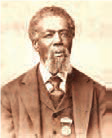
 1920—Frank Hague, now Jersey City mayor, passes an ordinance that requires anyone making a public speech in his town to first get clearance from the Police Department, which he controls. Without public opposition, Hague serves as mayor for 30 years (1917– 1947).
1920—Frank Hague, now Jersey City mayor, passes an ordinance that requires anyone making a public speech in his town to first get clearance from the Police Department, which he controls. Without public opposition, Hague serves as mayor for 30 years (1917– 1947).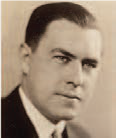 1954—Former governor Harold Hoffman admits in a letter opened after his death that he had embezzled more than $250,000 and was also being blackmailed for $150,000.
1954—Former governor Harold Hoffman admits in a letter opened after his death that he had embezzled more than $250,000 and was also being blackmailed for $150,000. 1982—The Senate Committee on Ethics recommends that Senator Harrison Williams be expelled because of his “ethically repugnant” conduct in the ABSCAM sting—an FBI operation aimed at ferreting out corruption in congress. He later becomes the first Senator in 80 years to go to jail.
1982—The Senate Committee on Ethics recommends that Senator Harrison Williams be expelled because of his “ethically repugnant” conduct in the ABSCAM sting—an FBI operation aimed at ferreting out corruption in congress. He later becomes the first Senator in 80 years to go to jail.

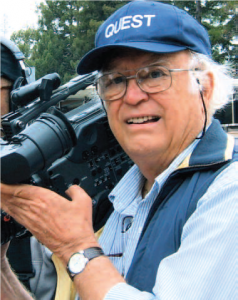
 ctions, a religious film company in Valley Forge, PA. “I told them I didn’t know anything about film,” says Jersey. “They hired me anyway, and I learned how to be an art director. I also realized how little I knew.” So he headed West to graduate film school at the University of Southern California. Graduating in 1956, he dipped his toe in the B-movie drama pool as Art Director of The Blob, Manhunt in the Jungle and 4D Man. But he was primed for documentaries. “There was something about wanting to connect to people in the real world and finding them much more interesting than working with actors with a script,” he says. “If you really care about people, they will know it, and they will open themselves up to you. And that’s what makes a good documentary.”
ctions, a religious film company in Valley Forge, PA. “I told them I didn’t know anything about film,” says Jersey. “They hired me anyway, and I learned how to be an art director. I also realized how little I knew.” So he headed West to graduate film school at the University of Southern California. Graduating in 1956, he dipped his toe in the B-movie drama pool as Art Director of The Blob, Manhunt in the Jungle and 4D Man. But he was primed for documentaries. “There was something about wanting to connect to people in the real world and finding them much more interesting than working with actors with a script,” he says. “If you really care about people, they will know it, and they will open themselves up to you. And that’s what makes a good documentary.” Bill Youngdahl to integrate a large, all white church in Omaha.
Bill Youngdahl to integrate a large, all white church in Omaha. producing and directing independent documentaries on such hot button issues as racism, criminal justice, gang violence, AIDS, Communism and integration. “For me, cinema vérité means letting the truth drive the story,” explains Jersey. “I don’t set out to prove anything— as many documentarians do. The difference between me and others is that I believe in being a participant observer. I explore options with my participants in the belief that our encounters will open them up to seeing more of themselves—not to see themselves as I see them. It’s a tricky business; but in my view, it’s an essential part of being a documentarian.”
producing and directing independent documentaries on such hot button issues as racism, criminal justice, gang violence, AIDS, Communism and integration. “For me, cinema vérité means letting the truth drive the story,” explains Jersey. “I don’t set out to prove anything— as many documentarians do. The difference between me and others is that I believe in being a participant observer. I explore options with my participants in the belief that our encounters will open them up to seeing more of themselves—not to see themselves as I see them. It’s a tricky business; but in my view, it’s an essential part of being a documentarian.” to debuting on PBS as part of the American Masters series. It should come as no surprise that Bill Jersey—father of five and grandfather of five—has no intention of winding down. “On the contrary, I’m winding up!” he says with relish, as he now juggles two careers instead of one.
to debuting on PBS as part of the American Masters series. It should come as no surprise that Bill Jersey—father of five and grandfather of five—has no intention of winding down. “On the contrary, I’m winding up!” he says with relish, as he now juggles two careers instead of one. out in the country where the light is changing. If you’re painting a river, you’re painting something in motion. The light does not sit there for you. That lovely shadow from the rooftop that you love will be gone in 15 minutes. It’s a very alive process.”
out in the country where the light is changing. If you’re painting a river, you’re painting something in motion. The light does not sit there for you. That lovely shadow from the rooftop that you love will be gone in 15 minutes. It’s a very alive process.”
 only one who sees this?
only one who sees this? saying goodbye because he has to change his user name. (By the way, did you know that Lady Gaga has more Twitter followers than the Pope, the President, and Katy Perry—combined?)
saying goodbye because he has to change his user name. (By the way, did you know that Lady Gaga has more Twitter followers than the Pope, the President, and Katy Perry—combined?) in my voice, he tried to soften the blow. “Well, I’m not 100 percent sure about her.” But I knew he was right. She was a fake, too. Then, to add insult to injury, follower number one dropped me while my son was holding the phone. “Snap, crackle, pop,” he smiled, “you’ve been dropped!” Of course I was dropped.
in my voice, he tried to soften the blow. “Well, I’m not 100 percent sure about her.” But I knew he was right. She was a fake, too. Then, to add insult to injury, follower number one dropped me while my son was holding the phone. “Snap, crackle, pop,” he smiled, “you’ve been dropped!” Of course I was dropped.
















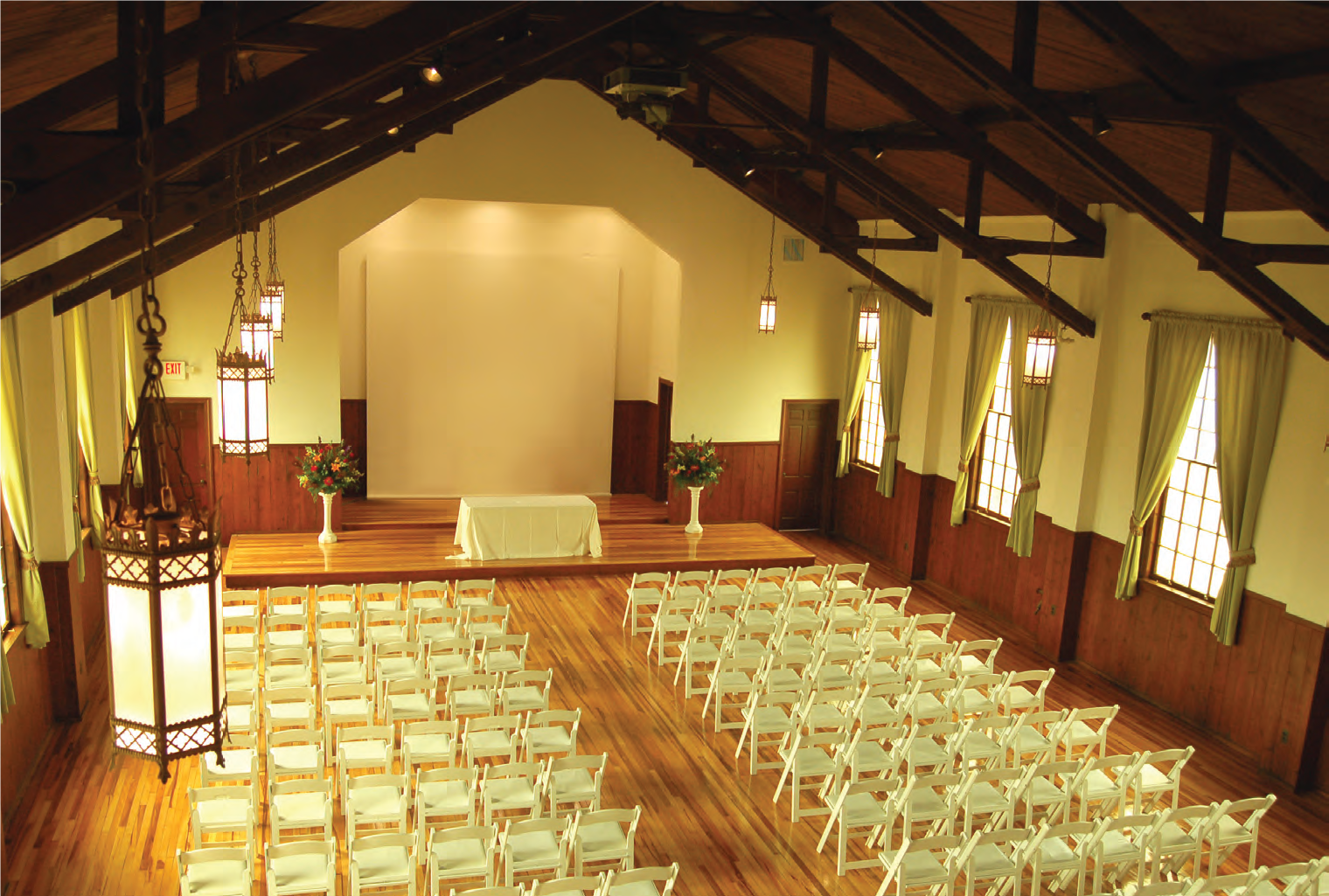


 What should I order for dinner? David Burke: Always ask to hear about the specials. Are they seasonal? Do the match the weather? Are they really special? I was at an Italian place one night and they had 15 specials. To me that’s not special. There are certain things I find irresistible. Peking Duck. When I see that on a menu I automatically order it, even if I’m not in a Chinese restaurant. Stone crab with mustard sauce. Paella, but only at a really good place. I love Florentine ravioli with the spinach and the poached egg. In terms of seasonal items, you can’t go wrong with Copper River salmon or shad roe in the spring, and pheasant and venison around the holidays. And truffles when they first hit the season. If you are less adventurous and looking for reliable, a good restaurant should always do the simple things well—Caesar salad, roasted chicken, crab cakes, omelets, bread. Chef David Burke knows his way around a menu. He owns Fromagerie in Rumson, Primehouse in Chicago, Prime in Connecticut, and Fishtail, David Burke Townhouse and David Burke Kitchen at the James Hotel in Manhattan.
What should I order for dinner? David Burke: Always ask to hear about the specials. Are they seasonal? Do the match the weather? Are they really special? I was at an Italian place one night and they had 15 specials. To me that’s not special. There are certain things I find irresistible. Peking Duck. When I see that on a menu I automatically order it, even if I’m not in a Chinese restaurant. Stone crab with mustard sauce. Paella, but only at a really good place. I love Florentine ravioli with the spinach and the poached egg. In terms of seasonal items, you can’t go wrong with Copper River salmon or shad roe in the spring, and pheasant and venison around the holidays. And truffles when they first hit the season. If you are less adventurous and looking for reliable, a good restaurant should always do the simple things well—Caesar salad, roasted chicken, crab cakes, omelets, bread. Chef David Burke knows his way around a menu. He owns Fromagerie in Rumson, Primehouse in Chicago, Prime in Connecticut, and Fishtail, David Burke Townhouse and David Burke Kitchen at the James Hotel in Manhattan.  know which architect was great. Samuel Friedmann is President of Gevril Group. The Gevril name has been associated with museum-quality timepieces dating back to the 16th century.
know which architect was great. Samuel Friedmann is President of Gevril Group. The Gevril name has been associated with museum-quality timepieces dating back to the 16th century. Why am I not making my own pasta? Teresa Giudice: Given that gourmet pasta can run $7 a pound and more—and that it’s so simple to do— I don’t know why. There’s something magical about making it yourself. It does take a little more time and effort, but the reward is so, so worth it. When it comes to making pasta from scratch, you need to buy a decent machine (there are good ones for $30 and great ones for under $100) and use the same basic recipe with only two ingredients: flour and eggs. What determines the final product is how you cut it. For most pasta shapes, the dough should be as thick as a nickel. For ravioli, which overlaps at the edges, the pasta should be as thick as a dime. Two things to remember after you’re done: add salt to the water after it boils but before the pasta goes in…and make sure your sauce is done by the time the water comes to a boil. Fresh pasta cooks quickly! Teresa Giudice became a reality TV icon on Real Housewives of New Jersey…and is now an accomplished author. Her second cookbook—Fabulicious!—made the New York Times Best-Seller List.
Why am I not making my own pasta? Teresa Giudice: Given that gourmet pasta can run $7 a pound and more—and that it’s so simple to do— I don’t know why. There’s something magical about making it yourself. It does take a little more time and effort, but the reward is so, so worth it. When it comes to making pasta from scratch, you need to buy a decent machine (there are good ones for $30 and great ones for under $100) and use the same basic recipe with only two ingredients: flour and eggs. What determines the final product is how you cut it. For most pasta shapes, the dough should be as thick as a nickel. For ravioli, which overlaps at the edges, the pasta should be as thick as a dime. Two things to remember after you’re done: add salt to the water after it boils but before the pasta goes in…and make sure your sauce is done by the time the water comes to a boil. Fresh pasta cooks quickly! Teresa Giudice became a reality TV icon on Real Housewives of New Jersey…and is now an accomplished author. Her second cookbook—Fabulicious!—made the New York Times Best-Seller List.  I’m 44. I’m single. What now? Norah Marler: Get comfortable with yourself; it’s okay to be single and at this time of your life it’s okay to be a little selfish. Enjoy some “me time” by doing all the things you haven’t been able to get to because you’ve been too busy giving your time to others. Perhaps you’ve been longing to go back to school or take dancing lessons, learn to ski or become a world traveler. Whatever your desires are, now is the time start living them. Then commit to the best interests of the person you love: You. Analyze your past, present and hoped-for future and develop a program for achieving that future. Make a list of what you want and what you need. Create a life plan that will fulfill your needs. It’s your life—create it as you wish, but you must follow a Think-It…Plan-It…Built-It blueprint. Norah Marler is 44 and has been single for many years. She is a passionate advocate for women’s health, safety and wellness, the author of No More Dating Pigs and the mind behind the nomoredatingpigs.com web site.
I’m 44. I’m single. What now? Norah Marler: Get comfortable with yourself; it’s okay to be single and at this time of your life it’s okay to be a little selfish. Enjoy some “me time” by doing all the things you haven’t been able to get to because you’ve been too busy giving your time to others. Perhaps you’ve been longing to go back to school or take dancing lessons, learn to ski or become a world traveler. Whatever your desires are, now is the time start living them. Then commit to the best interests of the person you love: You. Analyze your past, present and hoped-for future and develop a program for achieving that future. Make a list of what you want and what you need. Create a life plan that will fulfill your needs. It’s your life—create it as you wish, but you must follow a Think-It…Plan-It…Built-It blueprint. Norah Marler is 44 and has been single for many years. She is a passionate advocate for women’s health, safety and wellness, the author of No More Dating Pigs and the mind behind the nomoredatingpigs.com web site. 

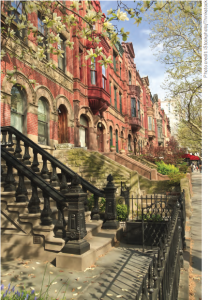 is determined by a combination of the square footage, location and amenities. The more you know about the value of each in the constantly shifting sands of New York City’s co-op, condo and rental market, the more bang you’ll get for your buck. The bells and whistles that drive up the price include having a doorman, a terrace, a non-closetsized kitchen and a good view. But you knew that already. Not everything, however, is intuitive to the out-of-towner. For example, discrepancies in prices between one-bedrooms and studios may not be overwhelming. Neighborhoods that seem on-the-fringe when you’re visiting the city may actually be on the cusp. And that Upper East Side neighborhood that used to be out of reach when you were twentysomething and just out of college? Well, there’s good news on that front, too. Manhattan has changed dramatically (Gothamites like to do everything dramatically) in the last 20 years. Areas like Tribeca, the Flatiron district, the Lower East Side, and the Meatpacking district—where most apartments were once cheap, but often of dubious quality and lacking in amenities—have become the hottest residential neighborhoods in town. Consequently, the Upper East Side, once the magnet for people of means looking for apartments, has become relatively reasonable. It’s one of six neighborhoods in the city that offers good deals, interesting features or a little of both: Wall Street: Numerous palatial old office buildings in the Financial District, abandoned by brokerage firms, have been converted to apartments.
is determined by a combination of the square footage, location and amenities. The more you know about the value of each in the constantly shifting sands of New York City’s co-op, condo and rental market, the more bang you’ll get for your buck. The bells and whistles that drive up the price include having a doorman, a terrace, a non-closetsized kitchen and a good view. But you knew that already. Not everything, however, is intuitive to the out-of-towner. For example, discrepancies in prices between one-bedrooms and studios may not be overwhelming. Neighborhoods that seem on-the-fringe when you’re visiting the city may actually be on the cusp. And that Upper East Side neighborhood that used to be out of reach when you were twentysomething and just out of college? Well, there’s good news on that front, too. Manhattan has changed dramatically (Gothamites like to do everything dramatically) in the last 20 years. Areas like Tribeca, the Flatiron district, the Lower East Side, and the Meatpacking district—where most apartments were once cheap, but often of dubious quality and lacking in amenities—have become the hottest residential neighborhoods in town. Consequently, the Upper East Side, once the magnet for people of means looking for apartments, has become relatively reasonable. It’s one of six neighborhoods in the city that offers good deals, interesting features or a little of both: Wall Street: Numerous palatial old office buildings in the Financial District, abandoned by brokerage firms, have been converted to apartments.

 It’s that time of year again. For Sale signs are popping up everywhere you look. And once again, it’s a buyer’s market this summer. House hunters can afford to be picky, and they should be. Holding out for something extraordinary—price wise, property-wise or both—is half the fun of the hunt! When’s the best time to make your move? When the stars align and you walk into a home with some feature that blows away everything else you’ve seen. A charming front porch. A killer kitchen. The master bath of your dreams. A suburban oasis in the backyard. There are a lot of names for the house that speaks to you in that deep, intimate way. We call it the Home Run.
It’s that time of year again. For Sale signs are popping up everywhere you look. And once again, it’s a buyer’s market this summer. House hunters can afford to be picky, and they should be. Holding out for something extraordinary—price wise, property-wise or both—is half the fun of the hunt! When’s the best time to make your move? When the stars align and you walk into a home with some feature that blows away everything else you’ve seen. A charming front porch. A killer kitchen. The master bath of your dreams. A suburban oasis in the backyard. There are a lot of names for the house that speaks to you in that deep, intimate way. We call it the Home Run.






 Position Raceway, the indoor karting venue located near the Liberty Science Center in Jersey City. She admits she was itching to teach Michael and George a lesson as all three pulled on their helmets and strapped themselves into their karts (which—because of Michael’s age—were limited to a still-speedy 30 mph). Suzanne also admits to underestimating the fact that her sons work together like Velociraptors. With their three vehicles lined up one behind the other to start, the boys insisted she have the honor of taking the lead kart. In almost any race, both teens knew, you want your adversary ahead of you so you can choose the time and place of their ultimate defeat. In other words, she was dead meat before they started their engines. The flag dropped and the three roared into the first turn. Moments later, Suzanne found herself in third place. A nudge from George and then a stronger bump from Michael sent her into the black-and-yellow padded barrier. By the time she got back up to speed, she was playing catch-up. She never did close the gap on her sons, who showed her no mercy and gave her no daylight. They were too busy fighting for fraternal supremacy. George edged Michael at the finish line, with Suzanne a few heartbeats behind. “I should have realized they would never let me win,” she says bemusedly. “Even though I’m their mother, they will still win at any cost. The mistake I made was that I never should have started in front of them.” In the days that followed, as Suzanne returned to chauffer duties, mother and sons had something new to discuss: the fact that they were now officially, indisputably and undeniably “better drivers” than she—against a wealth of evidence still to the contrary. Suzanne reminded Michael and George that she had nearly caught up to them after they sent her into the wall. They corrected their mother, informing her that she had actually fallen a full lap behind! Shifting gears quickly, Suzanne pointed out that handling a kart at 30 mph takes considerably less skill and experience than zig-zagging through Turnpike traffic at 75 (although for the record she has never done that). Blank stares. Exasperated, Suzanne said that intentionally running your materfamilias off the road doesn’t make you a “better driver”—it makes you a dangerous one. Michael and George refused to dignify their mother’s accusations of collusion and dirty driving. Both maintain that Suzanne was the unfortunate victim of an unlucky accident. Looking back, Suzanne says the only humiliation she actually
Position Raceway, the indoor karting venue located near the Liberty Science Center in Jersey City. She admits she was itching to teach Michael and George a lesson as all three pulled on their helmets and strapped themselves into their karts (which—because of Michael’s age—were limited to a still-speedy 30 mph). Suzanne also admits to underestimating the fact that her sons work together like Velociraptors. With their three vehicles lined up one behind the other to start, the boys insisted she have the honor of taking the lead kart. In almost any race, both teens knew, you want your adversary ahead of you so you can choose the time and place of their ultimate defeat. In other words, she was dead meat before they started their engines. The flag dropped and the three roared into the first turn. Moments later, Suzanne found herself in third place. A nudge from George and then a stronger bump from Michael sent her into the black-and-yellow padded barrier. By the time she got back up to speed, she was playing catch-up. She never did close the gap on her sons, who showed her no mercy and gave her no daylight. They were too busy fighting for fraternal supremacy. George edged Michael at the finish line, with Suzanne a few heartbeats behind. “I should have realized they would never let me win,” she says bemusedly. “Even though I’m their mother, they will still win at any cost. The mistake I made was that I never should have started in front of them.” In the days that followed, as Suzanne returned to chauffer duties, mother and sons had something new to discuss: the fact that they were now officially, indisputably and undeniably “better drivers” than she—against a wealth of evidence still to the contrary. Suzanne reminded Michael and George that she had nearly caught up to them after they sent her into the wall. They corrected their mother, informing her that she had actually fallen a full lap behind! Shifting gears quickly, Suzanne pointed out that handling a kart at 30 mph takes considerably less skill and experience than zig-zagging through Turnpike traffic at 75 (although for the record she has never done that). Blank stares. Exasperated, Suzanne said that intentionally running your materfamilias off the road doesn’t make you a “better driver”—it makes you a dangerous one. Michael and George refused to dignify their mother’s accusations of collusion and dirty driving. Both maintain that Suzanne was the unfortunate victim of an unlucky accident. Looking back, Suzanne says the only humiliation she actually  suffered that evening was being photographed on the victory stand with her boys (now both six-footers) towering over her. Otherwise, it was a tremendous experience. “It was very entertaining,” she says. “We thoroughly enjoyed ourselves. It’s a great place. We hung out for an hour after the race. The people there couldn’t be nicer.” Okay, down to brass tacks. In a return engagement, does Suzanne think she would avenge her defeat? “I do,” she says with a competitive smirk. And just how? “No way I’m divulging my strategy! Let’s just say that Mom’s still got a few tricks up her sleeve.” EDGE
suffered that evening was being photographed on the victory stand with her boys (now both six-footers) towering over her. Otherwise, it was a tremendous experience. “It was very entertaining,” she says. “We thoroughly enjoyed ourselves. It’s a great place. We hung out for an hour after the race. The people there couldn’t be nicer.” Okay, down to brass tacks. In a return engagement, does Suzanne think she would avenge her defeat? “I do,” she says with a competitive smirk. And just how? “No way I’m divulging my strategy! Let’s just say that Mom’s still got a few tricks up her sleeve.” EDGE 